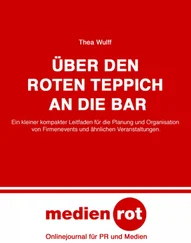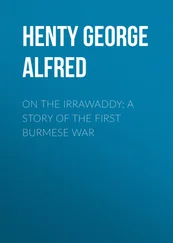Babur - The Bābur-nāma
Здесь есть возможность читать онлайн «Babur - The Bābur-nāma» — ознакомительный отрывок электронной книги совершенно бесплатно, а после прочтения отрывка купить полную версию. В некоторых случаях можно слушать аудио, скачать через торрент в формате fb2 и присутствует краткое содержание. Жанр: foreign_antique, foreign_prose, на английском языке. Описание произведения, (предисловие) а так же отзывы посетителей доступны на портале библиотеки ЛибКат.
- Название:The Bābur-nāma
- Автор:
- Жанр:
- Год:неизвестен
- ISBN:нет данных
- Рейтинг книги:4 / 5. Голосов: 1
-
Избранное:Добавить в избранное
- Отзывы:
-
Ваша оценка:
- 80
- 1
- 2
- 3
- 4
- 5
The Bābur-nāma: краткое содержание, описание и аннотация
Предлагаем к чтению аннотацию, описание, краткое содержание или предисловие (зависит от того, что написал сам автор книги «The Bābur-nāma»). Если вы не нашли необходимую информацию о книге — напишите в комментариях, мы постараемся отыскать её.
The Bābur-nāma — читать онлайн ознакомительный отрывок
Ниже представлен текст книги, разбитый по страницам. Система сохранения места последней прочитанной страницы, позволяет с удобством читать онлайн бесплатно книгу «The Bābur-nāma», без необходимости каждый раз заново искать на чём Вы остановились. Поставьте закладку, и сможете в любой момент перейти на страницу, на которой закончили чтение.
Интервал:
Закладка:
The book might be described as consisting of annals and diary, which once met within what is now the gap of 1508-19 (914-925). Round this gap, amongst others, bristle problems of which this change of literary style is one; some are small and concern the mutilation alone, others are larger, but all are too intricate for terse statement and all might be resolved by the help of a second MS. e. g. one of the same strain as Haidar’s.
Without fantasy another constituent might be counted in with the three territorial divisions, namely, the grouped lacunæ which by their engulfment of text are an untoward factor in an estimate either of Babur or of his book. They are actually the cardinal difficulty of the book as it now is; they foreshorten purview of his career and character and detract from its merits; they lose it perspective and distort its proportions. That this must be so is clear both from the value and the preponderating amount of the lost text. It is no exaggeration to say that while working on what survives, what is lost becomes like a haunting presence warning that it must be remembered always as an integral and the dominant part of the book.
The relative proportions of saved and lost text are highly significant: – Babur’s commemorable years are about 47 and 10 months, i. e. from his birth on Feb. 14th 1483 to near his death on Dec. 26th 1530; but the aggregate of surviving text records some 18 years only, and this not continuously but broken through by numerous gaps. That these gaps result from loss of pages is frequently shewn by a broken sentence, an unfinished episode. The fragments – as they truly may be called – are divided by gaps sometimes seeming to remove a few pages only (cf. s. a. 935 AH.), sometimes losing the record of 6 and cir. 18 months, sometimes of 6 and 11 years; besides these actual clefts in the narrative there are losses of some 12 years from its beginning and some 16 months from its end. Briefly put we now have the record of cir. 18 years where that of over 47 could have been. 6 6 That Babur left a complete record much indicates beyond his own persistence and literary bias, e. g. cross-reference with and needed complements from what is lost; mention by other writers of Babur’s information, notably by Haidar.
c. Causes of the gaps.
Various causes have been surmised to explain the lacunæ ; on the plea of long intimacy with Babur’s and Haidar’s writings, I venture to say that one and all appear to me the result of accident. This opinion rests on observed correlations between the surviving and the lost record, which demand complement – on the testimony of Haidar’s extracts, and firmly on Babur’s orderly and persistent bias of mind and on the prideful character of much of the lost record. Moreover occasions of risk to Babur’s papers are known.
Of these occasions the first was the destruction of his camp near Hisar in 1512 (918; p. 357) but no information about his papers survives; they may not have been in his tent but in the fort. The second was a case of recorded damage to “book and sections” (p. 679) occurring in 1529 (935). From signs of work done to the Farghana section in Hindustan, the damage may be understood made good at the later date. To the third exposure to damage, namely, the attrition of hard travel and unsettled life during Humayun’s 14 years of exile from rule in Hindustan (1441-1555) it is reasonable to attribute even the whole loss of text. For, assuming – as may well be done – that Babur left (1530) a complete autobiography, its volume would be safe so long as Humayun was in power but after the Timurid exodus (1441) his library would be exposed to the risks detailed in the admirable chronicles of Gul-badan, Jauhar and Bayazid ( q. v. ). He is known to have annotated his father’s book in 1555 (p. 466 n. 1) just before marching from Kabul to attempt the re-conquest of Hindustan. His Codex would return to Dihli which he entered in July 1555, and there would be safe from risk of further mutilation. Its condition in 1555 is likely to have remained what it was found when ‘Abdu’r-rahim translated it into Persian by Akbar’s orders (1589) for Abu’l-faẓl’s use in the Akbar-nama . That Persian translation with its descendant the Memoirs of Baber , and the purely-Turki Haidarabad Codex with its descendant the Babur-nama in English , contain identical contents and, so doing, carry the date of the mutilation of Babur’s Turki text back through its years of safety, 1589 to 1555, to the period of Humayun’s exile and its dangers for camel-borne or deserted libraries.
d. Two misinterpretations of lacunæ.
Not unnaturally the frequent interruptions of narrative caused by lacunæ have been misinterpreted occasionally, and sometimes detractory comment has followed on Babur, ranking him below the accomplished and lettered, steadfast and honest man he was. I select two examples of this comment neither of which has a casual origin.
The first is from the B.M. Cat. of Coins of the Shahs of Persia p. xxiv, where after identifying a certain gold coin as shewing vassalage by Babur to Isma‘il Safawi , the compiler of the Catalogue notes, “We can now understand the omission from Babar’s ‘Memoirs’ of the occurrences between 914 H. and 925 H.” Can these words imply other than that Babur suppressed mention of minting of the coins shewing acknowledgment of Shi‘a suzerainty? Leaving aside the delicate topic of the detraction the quoted words imply, much negatives the surmise that the gap is a deliberate “omission” of text: – (1) the duration of the Shi‘a alliance was 19-20 months of 917-918 AH. (p. 355), why omit the peaceful or prideful and victorious record of some 9-10 years on its either verge? (2) Babur’s Transoxus campaign was an episode in the struggle between Shaibaq Khan (Shaibani) Auzbeg and Shah Isma‘il – between Sunni and Shi‘a; how could “omission” from his book, always a rare one, hide what multitudes knew already? “Omission” would have proved a fiasco in another region than Central Asia, because the Babur-Haidar story of the campaign, vassal-coinage included, 7 7 App. H, xxx.
has been brought into English literature by the English translation of the Tarikh-i rashidi . Babur’s frank and self-judging habit of mind would, I think, lead him to write fully of the difficulties which compelled the hated alliance and certainly he would tell of his own anger at the conduct of the campaign by Isma‘il’s Commanders. The alliance was a tactical mistake; it would have served Babur better to narrate its failure.
The second misinterpretation, perhaps a mere surmising gloss, is Erskine’s ( Memoirs Supp. p. 289) who, in connection with ‘Alam Khan’s request to Babur for reinforcement in order to oust his nephew Ibrahim, observes that “Babur probably flattered ‘Alam Khan with the hope of succession to the empire of Hindustan.” This idea does not fit the record of either man. Elphinstone was angered by Erskine’s remark which, he wrote (Aug. 26th 1826) “had a bad effect on the narrative by weakening the implicit confidence in Babur’s candour and veracity which his frank way of writing is so well-calculated to command.” Elphinstone’s opinion of Babur is not that of a reader but of a student of his book; he was also one of Erskine’s staunchest helpers in its production. From Erskine’s surmise others have advanced on the detractor’s path saying that Babur used and threw over ‘Alam Khan ( q. v. ).
e. Reconstruction.
Amongst the problems mutilation has created an important one is that of the condition of the beginning of the book (p. 1 to p. 30) with its plunge into Babur’s doings in his 12th year without previous mention of even his day and place of birth, the names and status of his parents, or any occurrences of his præ-accession years. Within those years should be entered the death of Yunas Khan (1487) with its sequent obituary notice, and the death of [Khwaja ‘Ubaidu’l-lah] Ahrari (1491). Not only are these customary entries absent but the very introductions of the two great men are wanting, probably with the also missing account of their naming of the babe Babur. That these routine matters are a part of an autobiography planned as Babur’s was, makes for assured opinion that the record of more than his first decade of life has been lost, perhaps by the attrition to which its position in the volume exposed it.
Читать дальшеИнтервал:
Закладка:
Похожие книги на «The Bābur-nāma»
Представляем Вашему вниманию похожие книги на «The Bābur-nāma» списком для выбора. Мы отобрали схожую по названию и смыслу литературу в надежде предоставить читателям больше вариантов отыскать новые, интересные, ещё непрочитанные произведения.
Обсуждение, отзывы о книге «The Bābur-nāma» и просто собственные мнения читателей. Оставьте ваши комментарии, напишите, что Вы думаете о произведении, его смысле или главных героях. Укажите что конкретно понравилось, а что нет, и почему Вы так считаете.











